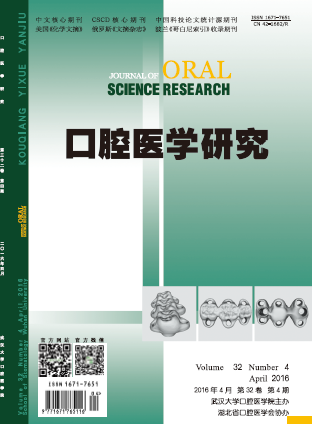|
|
Effects of Staining Solutions on Color, Translucency, and Surface Roughness of Contemporary Resin Cements: an in vitro Study.
CHENG Shao-long, YU Hao, CHEN Wei-ran, ZHENG Hai-yan, CHENG Hui.
2016, 32(4):
317-321.
DOI: 10.13701/j.cnki.kqyxyj.2016.04.001
Objective: To evaluate the effect of staining solutions on color, translucency, and surface roughness of contemporary resin cements. Methods: Six commercially available resin cements were investigated in the present study. For each material, twenty cylinder-shaped specimens with 10 mm in diameter and 1 mm in thickness were prepared and randomly divided into four groups. The specimens were immersed in 4 different solutions (deionized water, cola, coffee, and red wine) for 288 hours. The color parameters and surface roughness of specimens were measured before and after staining solutions for 48 h, 96 h, 144 h, 192 h, 240 h and 288 h. The color differences (ΔE values) and translucency parameter (TP) between baseline and post-treatments were calculated. Repeated measures ANOVA and one-way ANOVA with a significance level of 0.05 was used to evaluate the effect of immersion time, staining solutions, and materials on color difference (ΔE), translucency parameter (TP) and surface roughness (Ra). Results: Immersion in staining solutions produced similar behavior in time for all tested materials that ΔE was increased, TP was decreased and surface roughness did not change obviously. After 288 h immersion in coffee and red wine, all materials showed color changes above the clinically accepted value (all ΔE>3.3) and red wine induced the most pronounced color differences (ΔE=7.89~12.25). RelyX U200 showed higher color and TP stability compared to the other resin cements. The color stability of most light-cured resin cements was superior to that of dual-cured type. Conclusion: The effects of staining solutions on the color and translucency of resin cements are material dependent. However, all specimens show discoloration after completion of the test period which is visually perceptible (all ΔE>1).
References |
Related Articles |
Metrics
|

